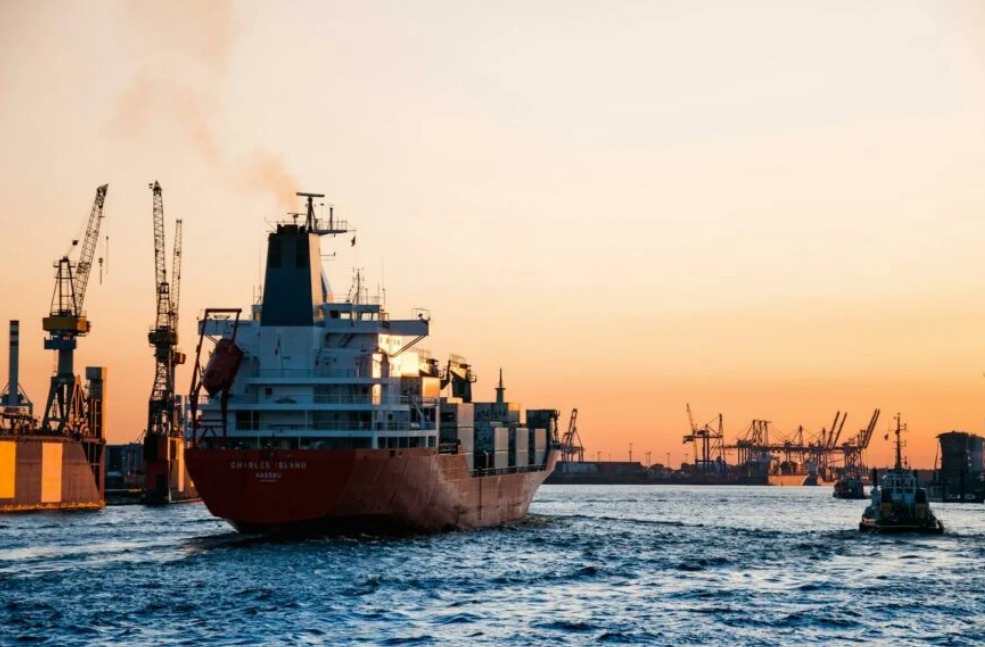According to data from the 2022 IPCC report, “maritime transport represents 16% of freight emissions and 70% of tonne-kilometers transported (i.e. the movement of one tonne of goods over one kilometer) » reminds us of this article from Greenly. Like aviation, the sector is frequently singled out for its very heavy ecological impact.
Most container ships plying our oceans run on heavy fuel oil (HFO), a residue from the distillation of crude oil that is much cheaper than lighter fuels such as maritime diesel or liquefied natural gas (LNG). A fuel that Morten Bo Christiansen (key player in the fight against carbon emissions within the shipping industry and senior vice president at A.P. Moller-Maersk) describes as “the bottom of the barrel”.
New regulations put in place by the International Maritime Organization aim to reduce sulfur and carbon emissions, leading industry players to explore the viability of alternative fuels.
Methanol, a promising alternative
Take the example of the Laura Maersk (see video below), a $160 million sea giant which set sail in 2023 to sail the Baltic Sea. This ship differs from its predecessors by one particularity: it runs exclusively on methanol, an organic component which is also the simplest of alcohols.
Unlike traditional fossil fuels, methanol offers significant environmental benefits when produced sustainably. Indeed, its manufacture can be carried out by capturing gas from landfill sites or by processes powered by renewable energies. This new approach makes it possible to considerably reduce polluting emissions.
It is not perfect, but remains entirely possible as a substitute for HFO. The enthusiasm for methanol in the field of maritime transport is quite palpable: more than 200 ships compatible with this alternative fuel are currently on order around the world.
Ammonia: clean, but complex to use
Ammonia presents itself as an alternative fuel, also with potential. It is one of the most synthesized substances in the world and is used in many fields: agriculture, chemical industry, refrigeration, water treatment and also as an energy vector. Its big advantage: many ports around the world already have ammonia supply structures.
However, its adoption in maritime freight transport can be a little complex, particularly due to its toxicity and the difficulties associated with its combustion. In fact, it requires very high temperatures (around 650°C, compared to around 60°C for HFO). However, Lars Tingbjerg Danielsen of MAN Energy Solutions emphasizes that many efforts are being made to overcome these obstacles.
One of the major areas for current improvement is the development of more efficient and more reliable engines allowing ammonia combustion at high temperatures. It requires very slow motors to burn properly, otherwise it can escape. The risk of contamination is then quite significant. The aim is to stabilize this process in slow two-stroke engines of large ships.
To do this, Danielsen’s company is studying the ignition of ammonia in engine blocks using high-speed cameras. This allows engineers to understand and optimize ignition and combustion processes while maximizing their safety.
Hydrogen: a candidate hampered by technical and economic challenges
On paper, hydrogen seems to be the ideal alternative fuel. Indeed, its combustion only emits water vapor (which still remains a greenhouse gas) and it appears to be impeccable from an ecological point of view.
In reality, using it in maritime transport means encountering major obstacles, both technically and economically. Christiansen points out that although hydrogen can be produced in a renewable way (green hydrogen), its physical properties greatly complicate its exploitation. The problem with hydrogen is that it evaporates at a very low temperature (-235°C).
To liquefy it and keep it stable, enormous amounts of energy are required. Even if many companies are currently working on alternatives to hydrogen storage (in the form of a solid bar or powder for example), the perfectly suited solution does not yet exist.
In addition to this, the hydrogen molecule is one of the smallest molecules in existence. This means that it can escape very easily through the slightest crack, posing significant problems of efficiency and safety.




